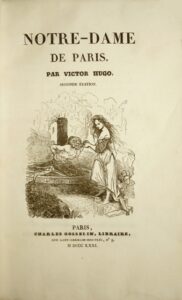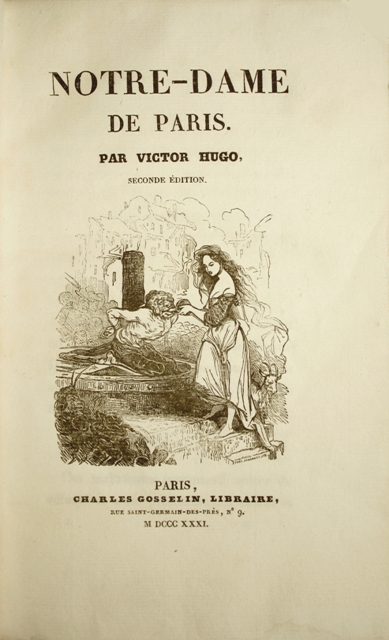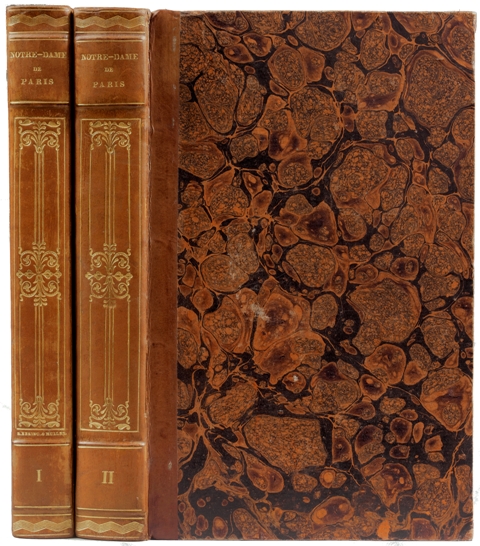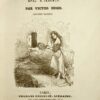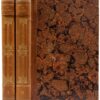Paris, Charles Gosselin, 1831.
2 volumes 8vo [205 x 128 mm] : (4) ll. for the half-title, title and foreword and 404 pp. for part 1; (2) ll. and 536 pp. for part 2. Both titles are decorated with Tony Johannot’s woodcuts engraved by Porret. Light-brown half-calf, marbled paper covers, decorated flat spines, lettering-pieces in relief at head and foot, marbled edges. Contemporary binding signed Hering & Muller.
First edition of the famous and first great novel by Victor Hugo. Carteret, I, pp. 400-402 ; Escoffier 870 ; Vicaire, Manuel de l’amateur de livres du XIXè siècle, IV, 256-257.
This copy belongs to the second state, with the author’s name on the title and the fictitious mention “Seconde édition” below the title.
« Since Gosselin’s copy appeared at auction (Leroy auction, March, 26-27th, 1931, N°328), it became indisputable that the mention of a second or third edition doesn’t take anything from the first edition nature of a book. Gosselin-Leroy’s copy bore indeed on a fourth edition of Notre-Dame de Paris, 1831, the following autograph note: « First edition published in 1100 copies that have been, following the habits of the bookselling at the time, divided into four editions. [Signed]. Charles Gosselin, editor» ». (Escoffier, Le Mouvement romantique, 870).
Michaud comes to the same conclusion in the Bulletin du bibliophile, 1931: «copies falsely pointed out as second or third edition authentically belong to the first edition”.
« This first edition, in good condition, is the rarest of all the author’s works; it had a worldwide impact, and it’s one of the most difficult to get from the Romantic period » (Carteret).
A precious very pure copy, without foxing, preserved in an elegant contemporary signed binding.
The partnership between the bookbinders Hering and Muller was very short (1830-1834). Indeed, former worker of Thouvenin, Muller took over his master’s workshop when he died, in 1834.
Bound-in autograph letter by Victor Hugo at the beginning of part 1 (1 p. 8vo) of March, 28th, 1831, to Mr. Barbier, managing editor of the Correspondant, regarding a copy of Notre-Dame de Paris sent to the paper, about which, says Hugo, “the opinion is one of those that matter the most to me”.
